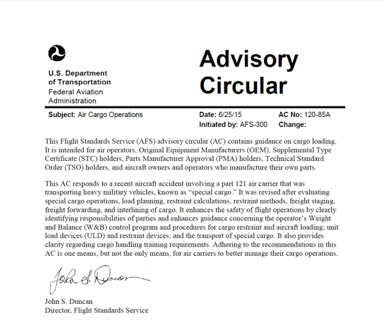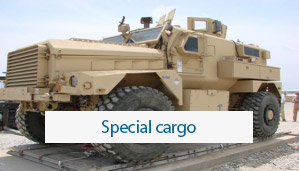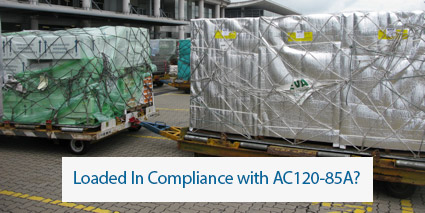Authorities, Basics, Cargo Terminals, Freight Forwarders, CARE, Ground Handlers, Regulators
Introducing FAA AC 120-85 A
 In some respects the existence of ULD CARE in its current format can be said to be as a result of the publication by the FAA in 2005 of AC 120–85 Air Cargo Operations. Published in the aftermath of the Fine Air 101 accident in 1997, the AC established some clear guidance for the airlines but also put in place a benchmark by which FAA inspectors would carry out operational checks on both US and non-US carriers. The impact of this publication was quite considerable, airlines found themselves scrambling to address a number of issues around their Air Cargo Operations and ULD came out from the shadows as it became clear that many aspects of ULD operations did not meet the minimum standards expected.
In some respects the existence of ULD CARE in its current format can be said to be as a result of the publication by the FAA in 2005 of AC 120–85 Air Cargo Operations. Published in the aftermath of the Fine Air 101 accident in 1997, the AC established some clear guidance for the airlines but also put in place a benchmark by which FAA inspectors would carry out operational checks on both US and non-US carriers. The impact of this publication was quite considerable, airlines found themselves scrambling to address a number of issues around their Air Cargo Operations and ULD came out from the shadows as it became clear that many aspects of ULD operations did not meet the minimum standards expected.
Both IATA and ULD CARE have responded significantly to this changed situation. Prior to 2005, the main issue around ULD’s was messaging and stock control; today that has all changed and the headline focus is on the compliant operation of ULD and the delivery of ground handling that will enable ULD to remain in an airworthy condition.
AC120-85A comes on the heels of National Air Cargo flight 102. The specific cause of this accident is well-established as being the uncontrolled movement of an extremely heavy military vehicle backwards along the aircraft during takeoff resulting in damage to both hydraulic and mechanical systems and causing the aircraft to crash. But the underlying causes of this accident are clearly connected to the human factor in the loading operation, which highlights for the entire industry the widespread lack of knowledge and understanding of the safety critical aspects of cargo loading throughout the air cargo industry.
The AC addresses the deficiencies that this accident has exposed, and it is not surprising that the term special cargo gets a great deal of visibility, no less than 67 occurrences compared to just 7 in the original AC, there is in fact a whole section (2.8) dedicated to special cargo. This section starts by defining special cargo:
2.8.1 What is Special Cargo? Cargo that is not contained in a ULD certified for the airplane CLS or enclosed in a cargo compartment certified for bulk loading is special cargo. This type of cargo requires special handling and securing/restraining procedures.
 …and then continues to give examples of types of cargo that might fit this definition and also defines the methods to be used when this type of cargo is being loaded.
…and then continues to give examples of types of cargo that might fit this definition and also defines the methods to be used when this type of cargo is being loaded.
Another significant section in the AC is 2.9- Use of Multiple Entities. This section is very specific about the manner in which airlines outsource ground handling and cargo activities, listing out some specific responsibilities under which a vendor must operate:
2.9.2.1.1.1 Requirements are met in accordance with the instructions of the operator;
2.9.2.1.1.2 Sufficient and proper ULD storage capacity is available for all units handled;
2.9.2.1.1.3 All staff and supervising staff receive training appropriate to the tasks performed; and
2.9.2.1.1.4 Full access is guaranteed to enquiries or audits from the operator’s quality control (QC) departments.
2.9.2.1.2 An operator should have a system in place to perform audits of a vendor at regular time intervals.
These five requirements align very closely with those found under “other parties responsibilities” in section 1 of the IATA ULD Regulations, and more to the point make very good sense, for if cargo operations are to be carried out in a safe manner that has to be some kind of minimum performance standard.
Another area that is of particular importance to the members of ULD CARE is the FAA’s position regarding interlining (Section 2.9) with these 3 requirements:
2.9.1.1 Procedures an Operator Should Have for Interlining. The operator should develop standards for accepting cargo in accordance with their policies and procedures, which include, at a minimum:
2.9.1.1.1 Cargo check (visual examination) including serviceability of ULDs;
2.9.1.1.2 ULD compatibility with aircraft (see paragraph 2.4.6, Determining ULD Compatibility); and
2.9.1.1.3 Special cargo verification and validation, if applicable.
The US airlines have already felt the effect of the publication of this AC, with their loading and other cargo operations manuals coming under very close scrutiny by the FAA. Probably the next step will be for the FAA to announce the commencement of an upgraded cargo operations training program at the facility in Oklahoma City, while this training program is primarily for their own inspectors the FAA does generally accept participants from airlines etc., ULD CARE will try to keep our members and readers informed regarding availability of this course.
Ever since the introduction of the first AC there have been two slightly controversial or confusing aspects of this document:
 The first is its applicability: does this only apply to US airlines or is everybody affected? The answer to this is that it applies to US airlines and to any non-US airline as and when their aircraft lands on US soil. It also applies to any non-US airline wet leasing a US registered aircraft regardless of where it operates.
The first is its applicability: does this only apply to US airlines or is everybody affected? The answer to this is that it applies to US airlines and to any non-US airline as and when their aircraft lands on US soil. It also applies to any non-US airline wet leasing a US registered aircraft regardless of where it operates.
The second is its enforceability, what is the requirement to comply with this AC? The answer to this may be found in the introduction where it is stated: “ This AC describes an acceptable means, but not the only means, of complying with applicable regulations to manage cargo operations”. To expand on this the FAA is not telling airlines exactly how they have to do things, that is up to the airline and the AC is simply providing generic guidance material, but where the AC is extremely clear is that airlines need to have and be following their own written procedures. Back of the envelope or word-of-mouth instructions are simply not going to be sufficient, airlines trying to go this route will find themselves in difficulty.
As was pointed out at the beginning of this article, the current mission statement of ULD CARE can be said to have been founded in response to the first publication of this AC back in 2005. These early efforts by ULD CARE back then were pretty much firefighting but today, 10 years on ULD CARE is far better placed to be proactively supporting airlines in their efforts to ensure compliance with this important and safety critical document. Expect to hear more from ULD on this very important subject.


